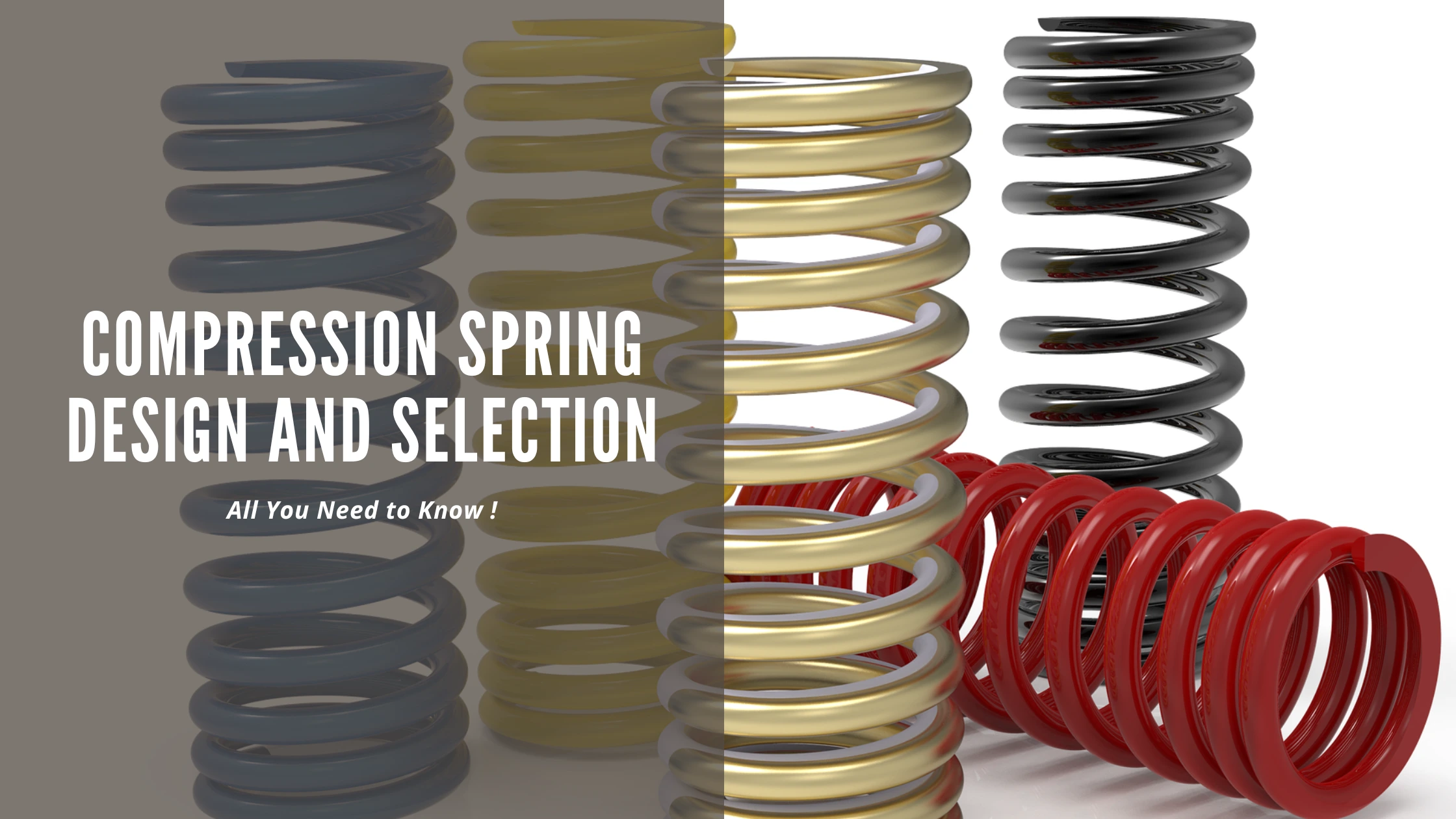Compression Spring Design and Selection

Compression springs are essential components in many mechanical systems. They are used in a variety of applications, from pneumatic cylinders to push-button controls, and are characterized by their ability to resist a compressive force applied axially. The design and selection of these springs, albeit based on simple mechanics, are crucial to the functionality and efficiency of the systems they are part of. This article will guide you through the process of designing and selecting a compression spring.
General Outline of Spring Selection & Design
Oftentimes when the need for a spring arises, your requirements are not fully set in stone. The approach often looks something like this:
- Convert Qualitative Requirements into Quantitative: Perhaps you know you need a spring with high deflection to absorb a large shock load. You need to translate this qualitative requirement into a quantitative one, and iterate on your optimal solution. You may need to calculate the required energy absorption, the minimum required stroke, or the final force output of the spring. Obtaining these primary requirements gives you a baseline to work with as you attempt to source a spring commercially.
- Determine Secondary Requirements: Once you have your core requirement known, you can iterate on the more secondary spring requirements. This may be things like material based on your operating environment, the end type or mounting scheme, and your overall dimensions. See the information below regarding online calculators for assistance on this step.
- Detailed Design: After your overall spring is set and chosen, your design will likely need to adapt to the spring's requirements. For a long spring, it is likely that mounting it within a tube or over a cylinder is required to prevent buckling. Based on the expected spring forces, you may need additional support. If the stroke is longer than desired, an early stop feature may be required.
Selecting a Compression Spring
- Physical Dimensions: Dimensions such as the outer diameter and free length are important to know so that your spring physically fits within an allowable spaceclaim. A spring’s solid height is also important to know, so that you don’t fully compress the spring in operation, thus rendering it useless.
- Spring Rate: The spring rate, or spring constant, is the relationship of the force to compress a spring by a unit of length, typically pounds per inch (lbs/in). With a given load, the product designer can calculate expected spring travel. In almost all cases, this is considered to be a constant value, but in some designs, such as those with variable rate springs, this assumption does not hold. It’s also important not to overstress the spring past its elastic limit, or else this spring rate may suffer a permanent change or start to become nonlinear in the extremes of its travel.
- Travel: It's also important to consider the loading or travel requirements on the compression spring. In many cases, for either the function of the spring mechanism or the shock absorption, a certain amount of travel is required. The engineer will have to balance this travel requirement with both overall spaceclaim and spring stress. The further the spring travels, the more stress it endures. At a certain point, the stress can yield the wire material, causing a phenomenon referred to as spring set. After spring set, the spring will not expand back to its original unloaded length. However, in some assemblies, such springs can still function.
- Material: Especially in corrosive or other extreme environments, the spring material or coating can extend the spring’s lifespan considerably. In many cases, a stainless steel spring will suffice, but in environments at extreme temperatures, a material like Inconel may be preferred.
- End Type: In most cases, your compression spring will be mounted flush with a surface, and an end type like closed and squared (more common for smaller springs) or squared and ground (more common for larger springs) will suffice. Both of these end types feature a final coil whose pitch has been modified to basically be perpendicular to the spring axis. In other cases, you may want an open style end type, which is basically an unmodified coil, or a more unique end type such as double closed, which will increase cost but add stability.
Online Compression Spring Calculator
An online compression spring calculator, such as the one available at CoilsDB, can be a valuable tool in the design and selection process. This tool and others like it allow you to determine spring properties like spring constant and solid height with just a few inputs. Some calculators include the additional benefit of pairing you with a list of compression springs for sale, saving the engineer the time of searching manually for a spring that meets their requirements.
